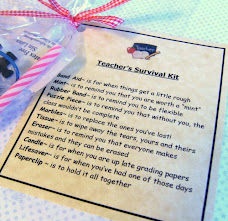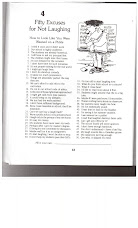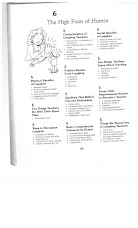So you want to be a comic teacher? Did you know that there are actually different types of humor? According to Romero and Cruthirds ( 2006 ), there are multiple humor styles that can be employed in the classroom and even workplace. Caution: Not all Humor Styles are effective in all situations. Don't worry, I can be your guide and lead you to the best possible humor styles for each of the specific diverse moments that you experience in school as a teacher and as a coworker. Oh don't worry, I am not making this stuff up, I am by no means the expert, I am simply going to translate the research of Romero and Cruthirds into teacherneese. After all they are from the business world, so without a guide as competent as me in both languages, much of the research could be lost in translation.
So what are those Humor Styles? Have no Fear, a Brief List is Right Here!
So what are those Humor Styles? Have no Fear, a Brief List is Right Here!
- Affiliative Humor- This is the joke telling, joking around, positive, good-natured type of humor. This type of humor brings people together.
- Self-Enhancing Humor- This type of humor is the one displayed by people who are looking to have a more humorous look on life. People use this type of humor to have a more positive look on life, like a coping mechanism (probably a more healthy approach than alcohol).
- Aggressive Humor- This is the more negative style of humor. It is used to manipulate others through the threat of ridicule! (If you want to keep your job, it may be a good idea to stay away from this type of humor.)
- Mild Aggressive Humor- This type of humor is aggressive humor watered down (without scotch or any other strong form of mind altering substances). It's used as a playful way to disagree or convince others to change their behavior.
- Self-Defeating Humor - This type of humor is used to downgrade yourself. People use this style to bring their own status down, by exposing their faults or at least their faults in a humorous way.
- SCENARIO 1- Getting your classroom to feel united can be a daunting task when so many students (30!), from too many different backgrounds, inhabiting a room smaller than their house, that often smells of old socks ( lack of deodorant) and feels like the Sahara desert ( No air- conditioning). Well HUMOR can help! Look just there I used affiliative humor to joke about the classroom situation. Every time, I bring up these facts to my students, they always roll around on the floor exhausted from laughter. We have so much fun joking about our horrible classroom conditions, that we feel more connected living in them for 6 hours a day together!
- SCENARIO 2- Getting through the students' ears and into their brains can be difficult when the students are having to learn boring material in insufferable conditions. Turn to HUMOR, it can be your co- teacher, your attention grabber, your.... mental magnet, so to speak! As I see my students sinking into their chairs becoming melting more and more into their desks, I pull out my mild aggressive humor to help shape their behaviors. I begin to poke a little innocent fun and the way they are melting and falling into their desks. I ask them if I am really so boring that a nap seems more appealing! I tease them innocently about how they are like limp puppets that need to be brought back to life! The kids get a kick out of all of the comparisons and are eager to come back to our classroom discussion or activity more engaged and better behaved. So guys (Greatbatch & Clark, 2002), discovered that humor increases motivation, enhances listening, and understanding of the messages teachers are trying to deliver.
- SCENERIO 3- Relating to the students can be so hard in the classroom because you want them to view you (the teacher) as the authority, but at the same time, you want them to know that you like everyone in the world are human. You struggled as a kid (or maybe you still do) with many of the same behaviors/ academics that you are helping them with. Use self-defeating humor to bring your status down to their level, so that they can connect better to you. I always try to make jokes about my self and my horrible spelling or the number of warning slips I received as a student for my non-stop talking disability (well at least I thought that it was uncontrollable, so therefore must be a disability). The kids get a kick out of my slamming my own weaknesses, and then feel more connected to me. They begin to realize that I am not judging them. I am just like them.




